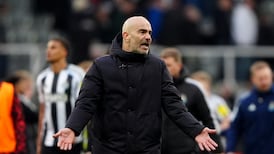Philip Reid continues his look at golf's greatest shots
Number 10 ... Ben Hogan: 1950 US Open
Years later the inimitable Tex-Mex Lee Trevino would observe that "only God can play a one-iron", but the truth is Ben Hogan had a deep love for that particular club. Not only was it one of the favourite clubs in his bag, but Hogan - born in Dublin, Texas, in 1912 - used it like a magical wand on more than one occasion. However, it was the US Open at the Merion Golf Club in Pennyslvania in 1950 that the one-iron became part of the Hogan legend.
The previous year, Hogan had been involved in a near-fatal head-on crash with a bus on his way home to Forth Worth. On impact, it is said, Hogan threw himself across his wife Valerie to save her from certain death and he received injuries so severe that the last rites were read and the local radio stations broadcast his obituary.
Only a year later Hogan - one of the most dedicated professionals in the history of the game - struggled up the fairway of the 18th hole at Merion on this Sunday in June. It was not really the 18th hole. It was the 36th hole of the day, for that was the way the US Open was structured at that time: 18 holes on Friday, 18 more on Saturday, then a gruelling 36 holes on Sunday.
It was a demanding schedule for any golfer, but especially for Hogan. Beneath his golf trousers, he was swathed in bandages from waist to ankles. Every step brought pain, and beneath the pain there was desperate fatigue. Several times during this round Hogan had said he didn't think he would be able to finish. But he kept doggedly on, even as his three-shot lead disappeared.
Now he was tied with two other golfers, George Fazio and Lloyd Mangrum, and he needed a par on this final hole of the day to force a play-off. Those who were there recall that Hogan not only struggled from the final tee box to his ball on the fairway, but that he staggered up to it. His pained legs kept threatening to give way, and a couple of times it seemed that he was about to fall.
Finally, Hogan reached his ball. The 18th at Merion is a long par four, and Hogan needed more than 200 yards on his second shot to hit the small, well-trapped green. Without a second thought, Hogan asked his caddie for the one-iron, probably the toughest shot in all of golf. Most players don't even carry a one-iron because it is such a difficult club to use.
But Hogan liked the one-iron. He could hit it well, probably better than any other golfer who ever lived. He sized up the shot, somehow steadied himself on those unsteady legs, and for a few seconds he willed the pain away as he struck the ball.
The success of the shot came with acoustics. There was a collective gasp from the gallery at the sweet sound of a clubhead hitting the ball perfectly and the ball's responsive take-off, followed by the kind of long, drawn-out "Ahhhhhh" usually reserved for fireworks; and, then came the round of applause as the shot settled neatly on the green.
It wasn't close enough for the birdie which would have won the match, but it was comfortably within two-putt range, and Hogan made his par and forced the play-off.
Well-rested and refreshed, with only 18 holes to face, Hogan won easily, shooting a 69 to Mangrum's 73 and Fazio's 75. It gave him his second of four US Open titles, and the incredible victory marked the rebirth of Hogan's career and the beginning of the legend.
At the end of the series, readers can vote for the Five Greatest Golf Shots Ever - the reader whose selections correspond with the shots selected by our Irish Times panel will enter a draw to win a custom fit Titleist 975J driver.











